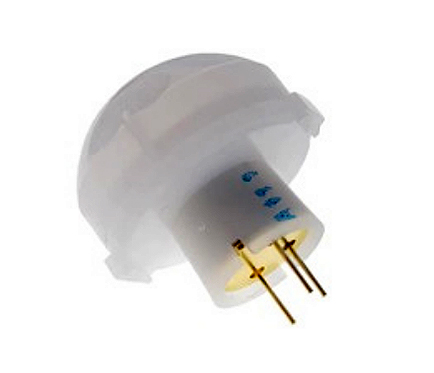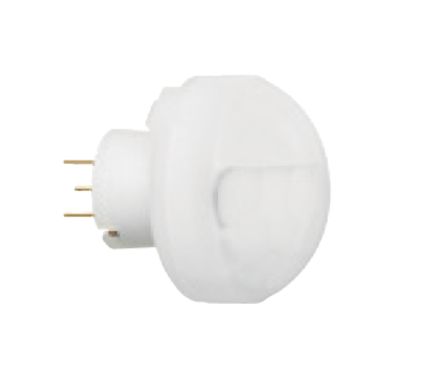PIR sensors (passive infrared sensors) are commonly used in security systems and automatic lighting applications but have many other uses. These sensors are infrared and detect motion based on changes in heat signature. But as with any electronic component, PIR sensors can run into problems that degrade their performance. This article addresses the prevalent issues associated with PIR sensors and outlines how these can be rectified while setting up a PIR motion sensor made for aquariums. In processing, we will get to the PIR motion sensor price and some differences in who needs new ones.
Best Offer Available
EKMC1603111 Panasonic PIR Motion Sensor
Request For Price
EKMC1604111 Panasonic PIR Motion Sensors
Request For Price
What are PIR sensors?
Knowing how a passive infrared PIR sensor works before troubleshooting it further is important. A warm body passing by the field of view of this device causes fluctuations in the level of infrared, which leads to its activation since it detects any form of energy within its spectrum, including those emitted by humans, among other objects. Security systems widely use them because they consume very little power but are still highly dependable.
Common Problems with PIR Sensors
False Alarms:
False alarms refer to instances where the PIR sensor triggers without any movement being present. They can be caused by temperature changes, sunlight, and even moving objects such as curtains or pets. Identifying what causes these fake alerts is important so that unnecessary warnings are not given out.
No detection or inconsistent detection:
A situation might arise where there is no detection at all for some time, then suddenly everything starts working again; this usually happens when either installation was done improperly, an obstructed view occurred, or one part has malfunctioned while others still function well enough, thus leading to irregular sensing abilities across different areas served by the same unit. If any area gets covered half-heartedly, so will the rest.
Limited Range of Coverage:
This problem is associated with incorrect placement or selecting an inappropriate type of sensor for a particular application. The sensor’s field of view and range are limited, thus preventing motion from being detected in some areas if it falls outside these parameters.
Interference with Other Devices:
In rare cases, certain electronic gadgets may malfunction due to electromagnetic interference emissions from PIR motion sensors. The cause could also be ungrounded wiring close to where these devices have been mounted; in such scenarios, it’s necessary to relocate affected components further apart or have them properly grounded so that no more problems occur thereafter.
Short Lifespan or Frequent Failures:
PIR sensors are reliable but can have their lifespan shortened if they are continuously exposed to harsh conditions and made of low-quality materials. Power supply problems might also cause them to fail occasionally.
Fixing Common Problems with PIR Sensors
Adjust sensitivity and range.
Problem: False alarms. Solution: Reduce the number of false triggers by tuning down the sensitivity settings on your PIR motion sensor light switch. You may also need to limit its range if it covers an area too wide.
Proper installation and positioning
Problem: No detection or inconsistent detection Solution: For best results, ensure that there are no obstructions in front of the PIR sensor’s lens and that it is installed between 6 and 8 feet above ground level.
Ways to lessen interference
Grounding the PIR sensor properly is one way of reducing its interference with other devices. Also, do not place it near other electronic or wiring equipment that may cause electromagnetic interference. Finally, if interference persists, try using a different shielded sensor or relocating it altogether.
Maintenance regularly
Maintenance should be done regularly so that these sensors last a long time. Clean the lens occasionally to remove any dust or debris affecting its performance, inspect for any signs of wear, and replace it where necessary.
Upgrading to high-quality sensors
Frequent problems encountered with PIR sensors call for an upgrade to better models available in the market today, such as the PIR Sensor Long Range Outdoor Wired Infrared IR Detector Passive Motion Alarm Waterproof Security System With Adjustable Sensitive Sensitivity Switch for Indoor Outdoor Home Garden. Though cost varies depending on the brand and quality, investing in reliable, well-reviewed products saves much trouble. Shooting hours later while researching them can help determine what suits you best according to your needs assessment.
PIR Motion Sensor Price Considerations
When buying a PIR motion sensor, it is important to consider the PIR motion sensor prices range within which they fall because prices differ due to factors like quality, brand name, etcetera. Here are some tips for selecting an appropriate-priced PIR sensor:
Budget
One should set aside enough money to meet his specific requirements concerning performance expectations associated with this device category; hence, setting a budget becomes mandatory before proceeding further into making any purchases related to it. However, cheaper options offer equal satisfactory outcomes sometimes when least expected, thus rendering them reliable choices, too.
Comparison of Features
Different types have different characteristics; therefore, comparing their features will help you select the one best suited for your needs within budget limits. Detection range and sensitivity adjustments, among other things, should be taken into account during the selection process since each one has its advantages over the other.
Reading reviews and ratings
Positive feedback gives confidence that what is being bought will serve its intended purpose well, so reading customer reviews and checking ratings could assist in making the right decisions about which product to buy when considering a PIR Sensor.
Application
Depending on where these devices are supposed to be used, like outdoor environments, they require weather resistance capabilities, an appropriate coverage range, etcetera, so ensure all factors are considered before settling on a specific type only after thorough scrutiny.
Conclusion
PIR sensors are vital components used for security purposes in most cases, but they may sometimes fail due to some common problems that affect their effectiveness. Understanding these problems and how to deal with them can help keep your PIR motion sensors working properly. It is also important to consider the prices associated with different types of this device category while making selections because you might end up buying something that does not work as expected, hence becoming unreliable later after installation or during use, even though all necessary measures were taken, including maintenance activities carried out from time to time and selecting an appropriately priced pir sensor based upon an individual needs assessment.



